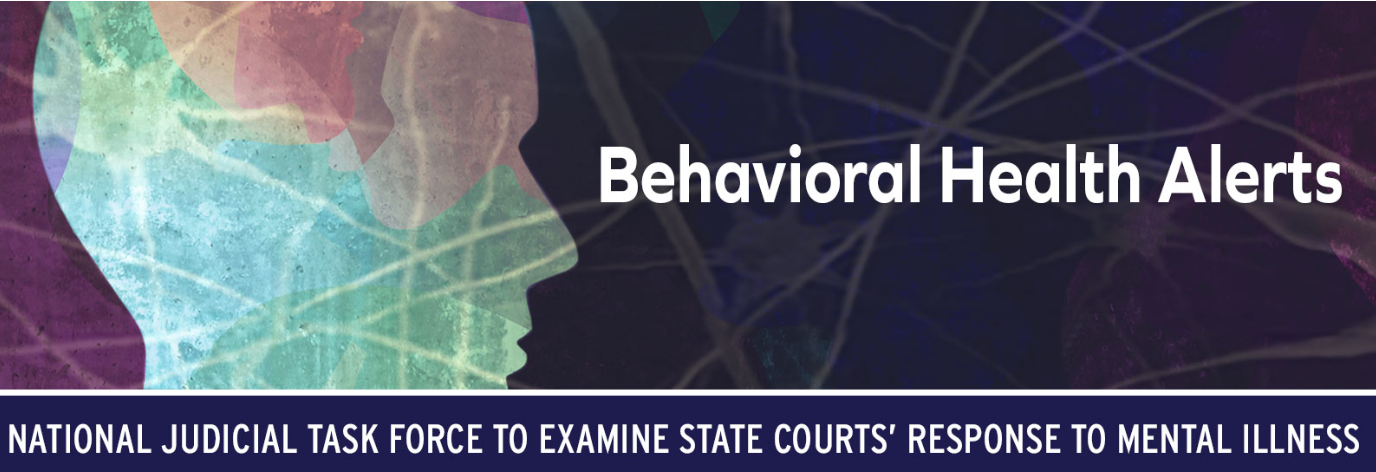In 2021, with support from State Justice Institute, the National Center for State Courts, in partnership with Rulo Strategies LLC, launched the Rural Justice Collaborative (RJC) to showcase the strengths of rural communities and highlight the cross-sector collaboration that is a hallmark of rural justice systems. These strengths include strong professional networks, deep ties to the communities they serve, resiliency, and ingenuity. The video below highlights the mission of the RJC: https://vimeo.com/735789228
Category: News
NCSC Publishes Best Practices for Court Building Security 2022 Edition
Now in its fourth edition, Steps to Best Practices for Court Building Security delivers updated guidance on a diverse array of court security topics. Examples include recommendations for implementing remote hearings for in-custody defendants and recommendations for security technology. The new release highlights how courts can integrate technology into building infrastructure—including security control centers, alarms, access control technology, and cameras. The updated guidance also incorporates greater attention to how architectural design can create safe separation and circulation for all court participants. The 2022 update also reinforces fundamental security concepts for courts of all shapes and sizes.

To help courts achieve these fundamental practices, the National Center for State Courts (NCSC) evaluates the effectiveness of court building security programs through responses to questions, such as:
- Is there a Court Security Committee in place? How does it function?
- Who is “in charge” of security in the courthouse? How do you know who’s in charge?
- What policies and procedures are in place? How are they developed?
- What training and exercise programs are in place? Who participates and how often are they conducted?
- Who gets screened for weapons?
- Who has access after hours?
- What is your role and responsibilities with respect to security?
To learn more about NCSC’s court security services, please visit the Court Security and Emergency Preparedness web page.
Kansas Judicial Branch Maximizes SJI Grant Funding
Over the past decade, the Kansas Judicial Branch has used SJI grants to accomplish many of its objectives, including improving its workforce and commencing access to justice initiatives. In FY 2016, an SJI grant (SJI-16-T-149) enabled the Judicial Branch to contract with the National Center for State Courts (NCSC) for an independent assessment of job classifications and rates of compensation for employees and district magistrate judges. The results were astonishing:
- Every employee job classification was 4.6 percent to 22.2 percent below market;
- Nine job classes, covering more than one-quarter of all employees, had a starting salary below the Federal Poverty Guideline for a family of four;
- Two classifications, (Trial Court Clerk II and Court Services Officer I), comprising approximately half of the Judicial Branch’s positions, were 17.8 percent below market.
- Nearly one-third of employees were working more than one job to make ends meet, and many more were looking for additional work outside the Judicial Branch for the same reason.
The NCSC updated the study in 2018, and calculations were revised the following years using the Consumer Price Index to account for market adjustments.
The salary issues were due to chronic underfunding of the Kansas court system. During one stretch, Kansas judges did not receive a pay increase for nine years, and employee position pay was not increased for eight years, except for a one-time 2 percent cost of living increase which was offset by increased employee benefit contributions. The SJI-funded classification and compensation study illustrated how significantly below market employee positions were, and provided a solid, independent basis for the Judicial Branch’s efforts in working with the Legislature to provide adequate funding for salaries. The Legislature recognized the situation and began annually increasing employee salaries to bring them to market rate.
In 2019, the Legislature appropriated a 5 percent increase to the Judicial Branch’s employee pay pool, which enabled the Supreme Court to allocate raises in proportion to the compensation study. The Legislature also appropriated 2.5 percent increases in 2018 and 2020. During the 2021 legislative session, the Legislature appropriated funding over two years to raise Judicial Branch employees to market rate, in accordance with the compensation study. That same year, the Legislature provided judges with 5 percent salary increases for fiscal years 2022 and 2023. During the 2022 session, the Legislature appropriated a 5 percent across-the-board increase for employees and judges for a cost-of-living adjustment. The impact of these increases is staggering. For the first time in decades, employee positions are at or near market pay and judges salaries are moving toward competitiveness.
A weighted caseload study for judges and clerks was initially performed by the NCSC in 2011. Because this caseload study provided valuable data, the Judicial Branch continued working with the NCSC on updates for judges, clerks, and administrative assistants. While this project was not supported with SJI funding, the Judiciary used the results as a basis for requesting and receiving additional positions in FY 2022. This project, in addition to the compensation study, provided adequate compensation figures for the positions contained in the weighted caseload studies.
The Kansas Judicial Branch has relied on SJI grant-funded projects for more than its salary efforts. Other successful projects supported by SJI over the years include:
- A 2019 NCSC performance audit of services to self-represented litigant needs and services (SJI-19-T-031). The audit included several site visits around the state, and detailed surveys of system stakeholders. The results of the audit include a report providing a roadmap for expanding the reach and impact of self-help services in Kansas. The Kansas Office of Judicial Administration, in conjunction with the Kansas Supreme Court’s Access to Justice Committee, has already made considerable strides toward implementing many of the report’s recommendations.
- A 2012 review of court collections processes, which resulted in legislative changes including the transfer of court collections contracts oversight from the Kansas Attorney General’s Office to the Judicial Branch.
New Release: The Steps to Best Practices for Court Building Security
The National Center for State Courts has just announced the publication of the revised 2022 edition of Steps to Best Practices for Court Building Security. The Steps to Best Practices document is intended to provide guidance to courts throughout the country in enhancing the security and safety of their court facilities. The document forth guidelines for what constitutes best practices in various areas of court building security. It also sets forth steps in phases that can be taken toward achieving these best practices. These steps may be helpful for courts as they strive to prioritize and implement improvements in court building security.
The current publication is the 4th edition of the Steps to Best Practices. The previous editions were published in 2010, 2013, and 2016.
For more information please visit: Steps to Best Practices for Court Building Security – Courthouse Facilities – National Center for State Courts (oclc.org)
Task Force Releases Comprehensive Guidelines, Principles for Juvenile Mental Health Diversion
Task Force Releases Comprehensive Guidelines, Principles for Juvenile Mental Health Diversion Upwards of 70% of young people in the justice system have a diagnosed mental disorder, and 90% have experienced a traumatic life event that can negatively impact their mental health. To assist courts and service providers in addressing the growing mental health crisis, the National Judicial Task Force to Examine Courts’ Response to Mental Illness recently released a set of Juvenile Justice Mental Health Diversion Guidelines and Principles.

To view the New Task Force Resources Released, please visit: Task Force Releases Comprehensive Guidelines, Principles for Juvenile Mental Health Diversion | NCSC
New Videos Explain the Basics of Conservatorships
The National Center for State Courts (NCSC) has just released a new set of resources to help courts monitor conservatorship cases. A three-part video series for court staff is now available online and provides guidance on case management, detecting red flags and ways to respond to suspected fraud or abuse.
The videos – Monitoring Conservatorship and Guardianship Cases, Red Flags in Financial Reports and Responses to Potential Fraud or Abuse – provide specific instruction on how court staff can ensure a conservator or guardian appropriately fulfills their duties through communication and effective case management. Court staff can also learn how to identify and report suspected fraud.
To ensure conservatorship cases are effectively managed, NCSC recommends that courts:
- Make expectations clear by providing instructions and communicating deadlines to conservators.
- Adopt case management practices that can easily track pending and closed cases, along with important deadlines and missing reports.
- Proactively develop an action plan to address issues.
NCSC also released a series of videos for conservators and prospective conservators that defines the role and responsibilities of a conservator. The videos outline specific questions a conservator should ask the court when appointed and provide guidance on what to consider when making decisions on behalf of another person and the information needed to successfully complete reports.
Courting Judicial Excellence in Juvenile Justice: A 50-State Study
Newly released report, Courting Judicial Excellence in Juvenile Justice: A 50-State Study, is a first of its kind analysis from the CSG Justice Center and the National Council of Juvenile and Family Court Judges (NCJFCJ), supported by the State Justice Institute, that examines how courts in all 50 states that handle juvenile delinquency cases (“juvenile courts”) are structured and operate. The purpose of this report is to draw attention to the critical role that juvenile court judges play and the need to treat the juvenile court as a specialty of practice. The report is structured around five key recommendations, including the rationale, concrete policies and practices for states to adopt, and related state best practices and innovations for jurisdictions to consider. States can use the report to identify gaps in their juvenile court policies and practices, identify best practices and innovations from other states, and advance a set of policy and practice recommendations for court improvement.
In addition to the report, key findings displayed across all 50 states can be found at the Juvenile Justice GPS (Geography, Policy Practice & Statistics). The information provides background on and visualizations of findings related to judicial selection; judicial specialization; how cases are assigned; and judicial experience, training, and tools provided to juvenile court judges.
Utah Is Using Data to Drive Debt Litigation Reform
A new analysis by the Utah Bar Foundation (UBF), conducted with support from The Pew Charitable Trusts, uses state-collected court data on tens of thousands of credit card, medical, rent, and other debt-related cases to assess civil court processes and recommend improvements. Utah is one of the few states working to gather data on and address issues related to debt collection cases in its courts.
To read the full article: Utah Is Using Data to Drive Debt Litigation Reform | The Pew Charitable Trusts (pewtrusts.org)
Second Round of Sites Selected of Convening County, Court and Justice Leaders Applicants
The National Association of Counties (NACo) and its partners at Rulo Strategies and Praxis Consulting, has just announced the second round of participants for the Convening County, Court & Justice Leaders: A Framework for Cross-System Collaboration initiative. The initiative was launched in January 2022, with support from the State Justice Institute. It is designed to support county, court and justice leaders as they partner to establish local priorities and align resources to achieve their justice and public safety goals. Sites will receive ongoing one-on-one technical assistance, have access to a peer network and be offered the opportunity to showcase their results in a nationally disseminated toolkit.
The second round of participating sites are:
- Berrien County, Michigan
- Cambria County, Pennsylvania
- Gallatin County, Montana
- Mesa County, Colorado
- Rockdale County, Georgia
To read the full NACo article: NACo Selects Second Round of Convening County, Court and Justice Leaders Applicants
IAALS Launches Allied Legal Professionals in an Effort to Increase Access to Quality Legal Services and Help Reduce Barriers to Representation
IAALS, the Institute for the Advancement of the American Legal System at the University of Denver, announced today that it is launching Allied Legal Professionals. With generous support from the Sturm Family Foundation, this project seeks to help standardize a new tier of legal professionals nationally—to increase the options for accessible and affordable legal help for the public.
Up and down the income scale, the legal needs of people in this country are going unmet. The inability to afford a lawyer, among other factors, has led to ballooning rates of self-representation in our justice system, with over 70 percent of civil and family cases including a party without a lawyer. People in these situations are not only facing life-altering challenges such as child custody hearings or landlord/tenant issues alone—they also face disproportionately bad outcomes in their cases.
Allied legal professionals hold a key to bringing more accessible and affordable legal help where it is needed most. Like data we have on nurse practitioners, research on allied legal professionals is beginning to show great potential for excellent public service. While this new tier of providers is a fairly nascent development, these programs are spreading quickly across the country. The limited research we have shows that these licensed and regulated professionals—who are not lawyers—can nevertheless represent clients as well as or better than lawyers in the limited matters they handle.
IAALS’ Allied Legal Professionals project will establish national best-practice thinking around allied legal professional programs by:
- Analyzing existing and proposed programs, the limited empirical research available, and similar experiences and programs from other countries and other professions (like nurse practitioners);
- Creating a framework for evaluating the relative advantages and challenges in the different models that exist;
- Convening diverse leaders and stakeholders to review the data and experiences, and establish recommendations and best practices; and
- Building a model for states to follow when considering and establishing allied legal professional programs in the future.
To read the full report from IAALS, please visit: IAALS Launches Allied Legal Professionals in an Effort to Increase Access to Quality Legal Services and Help Reduce Barriers to Representation | IAALS

